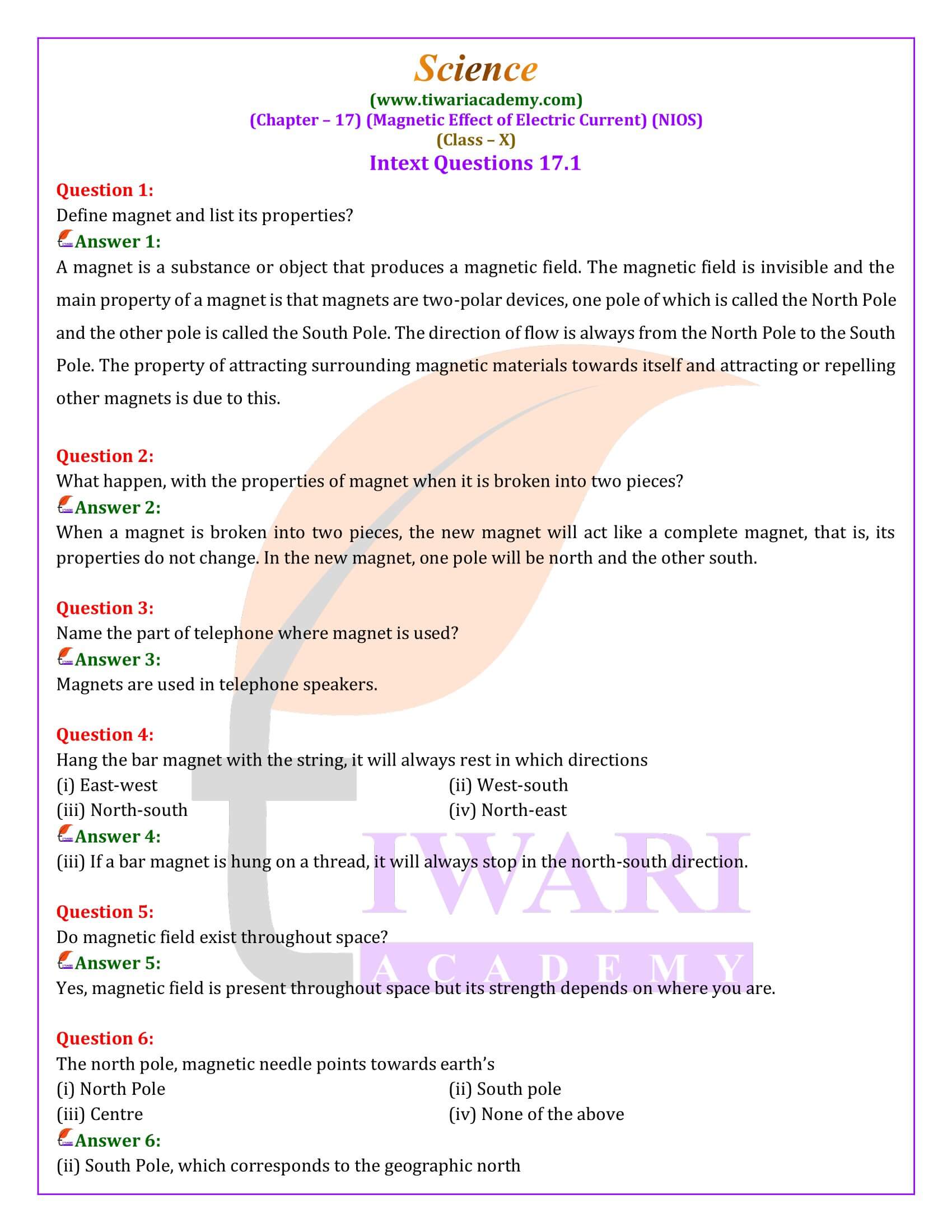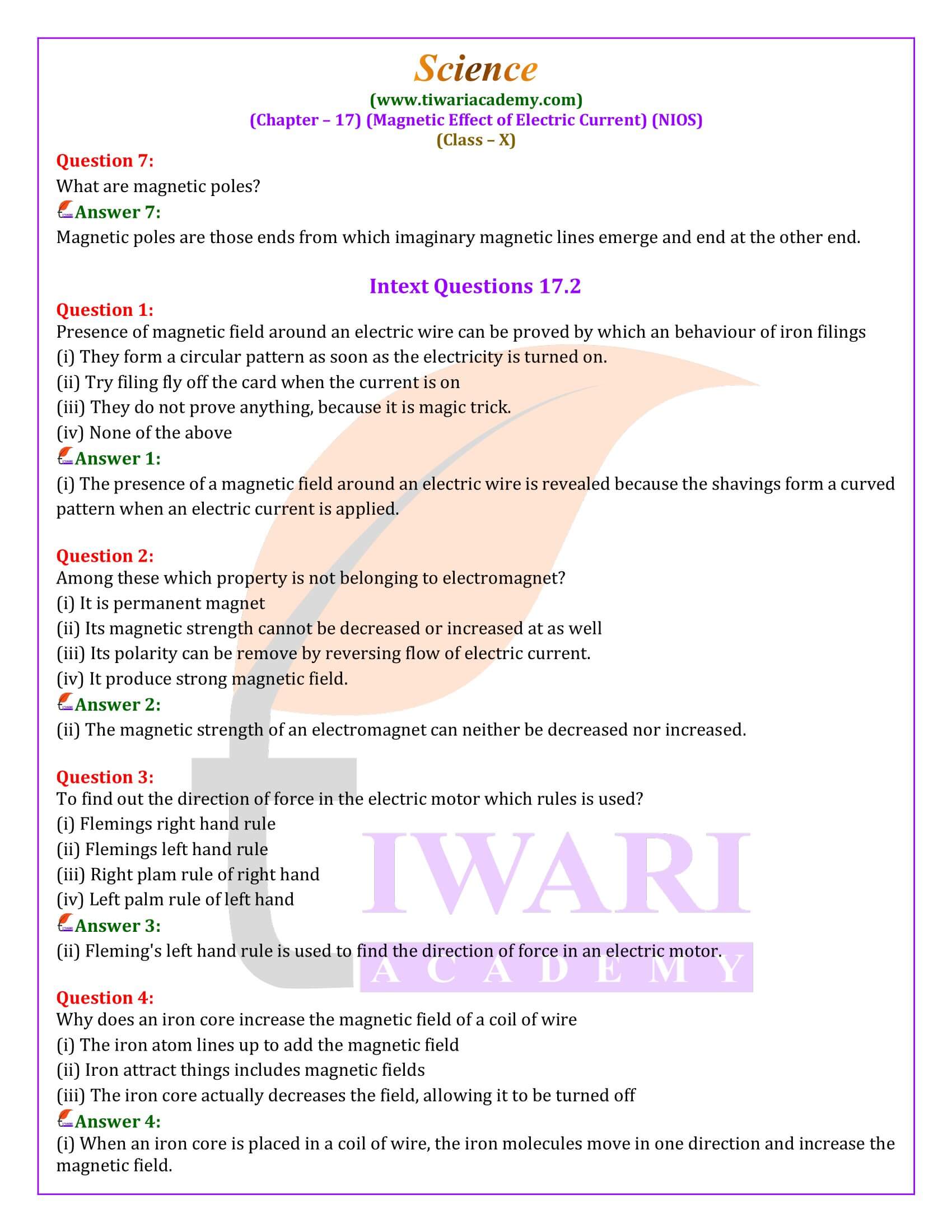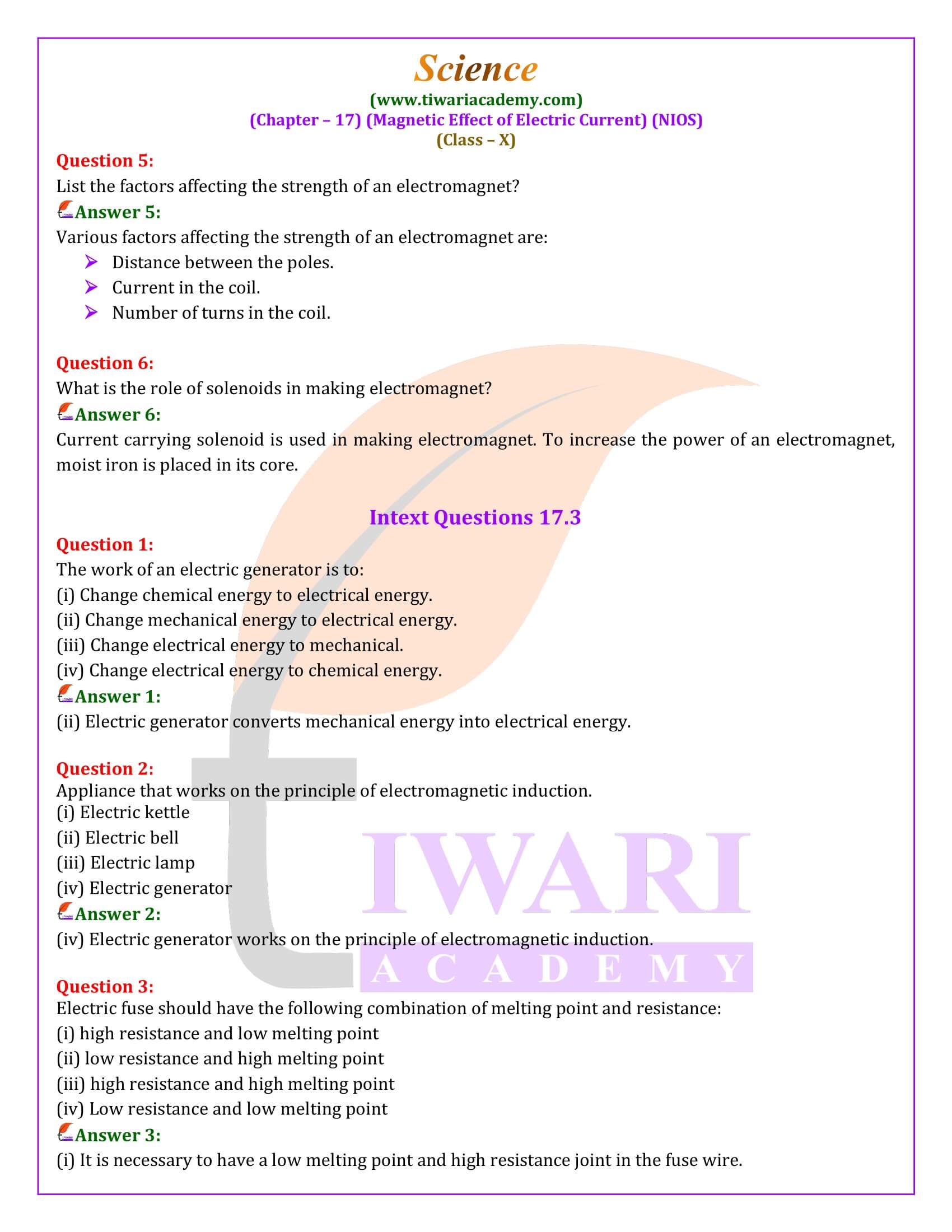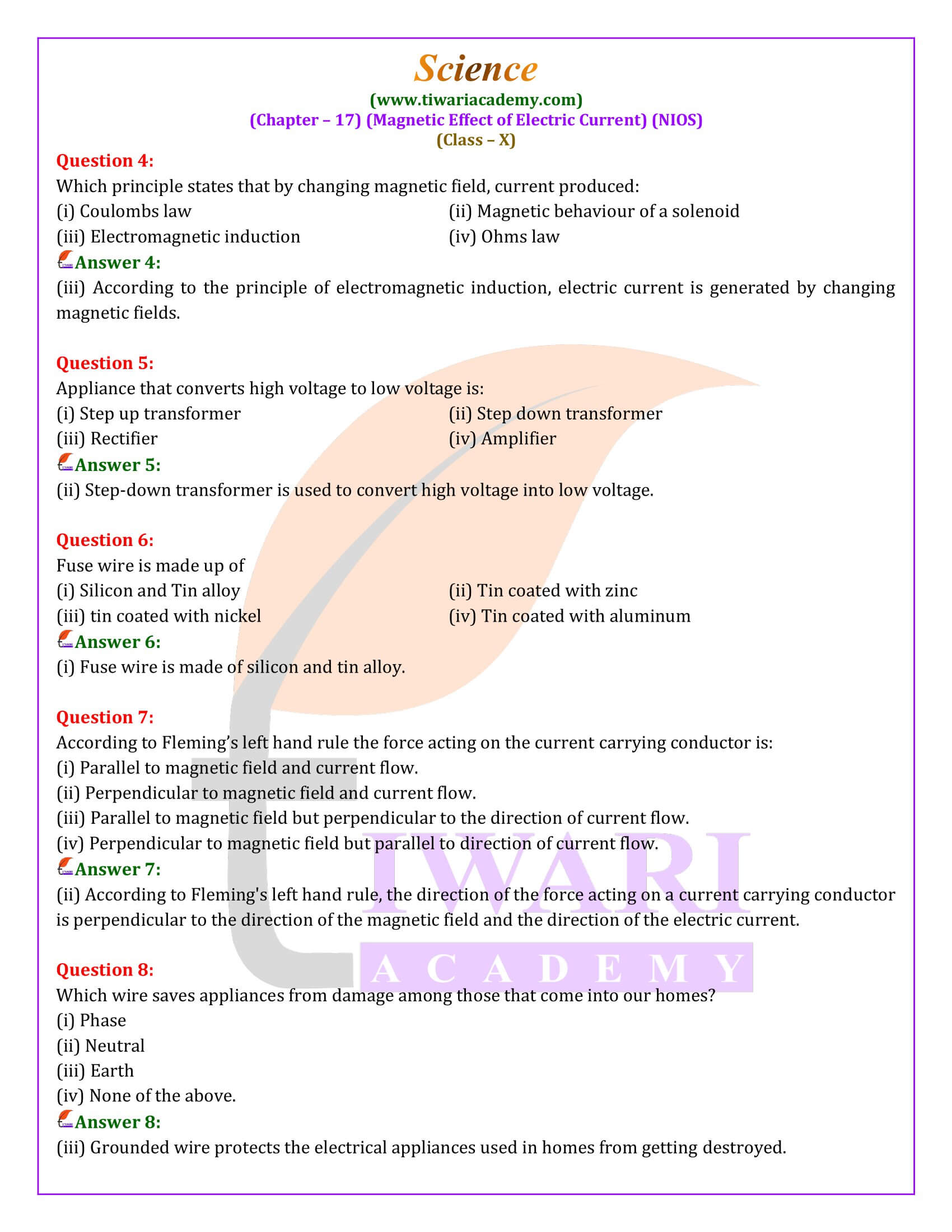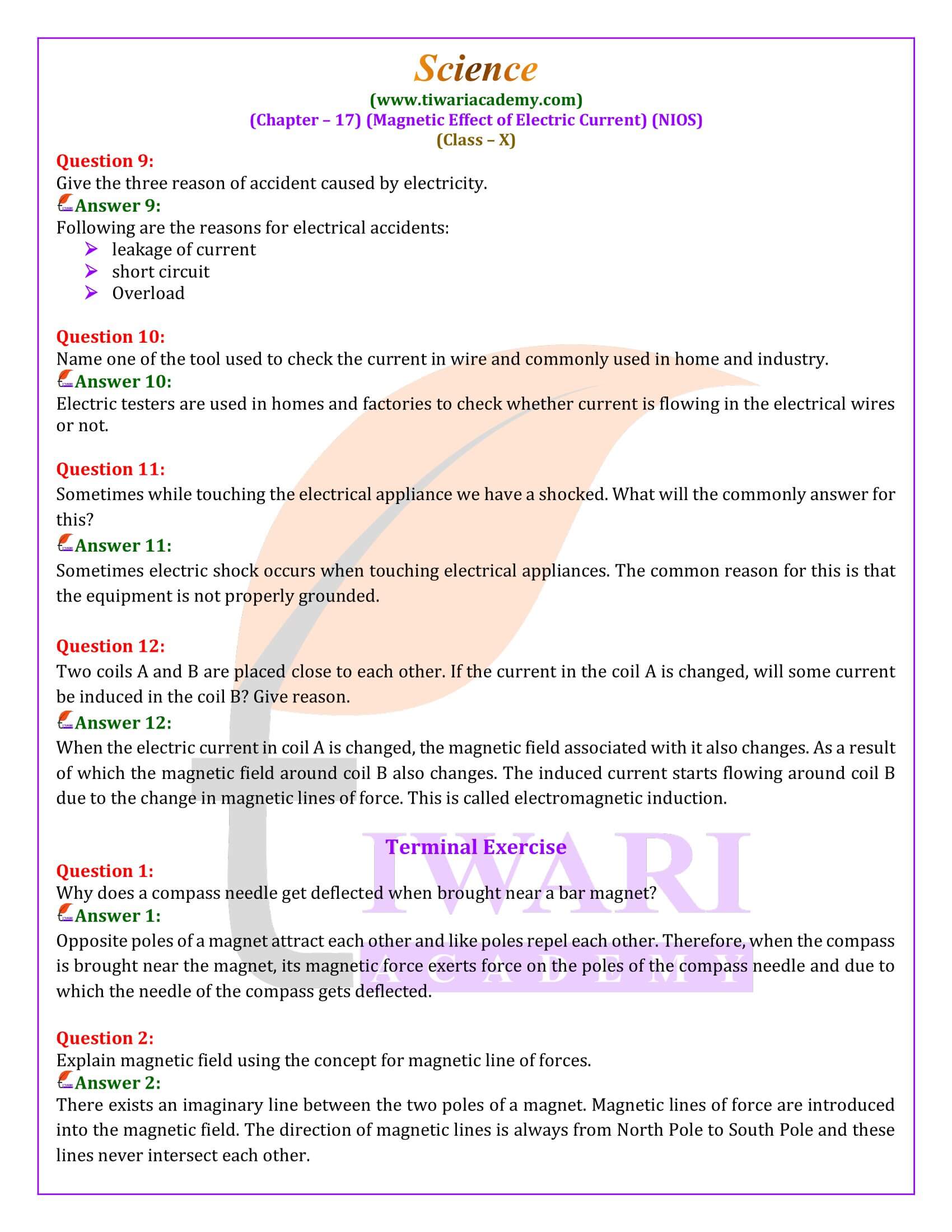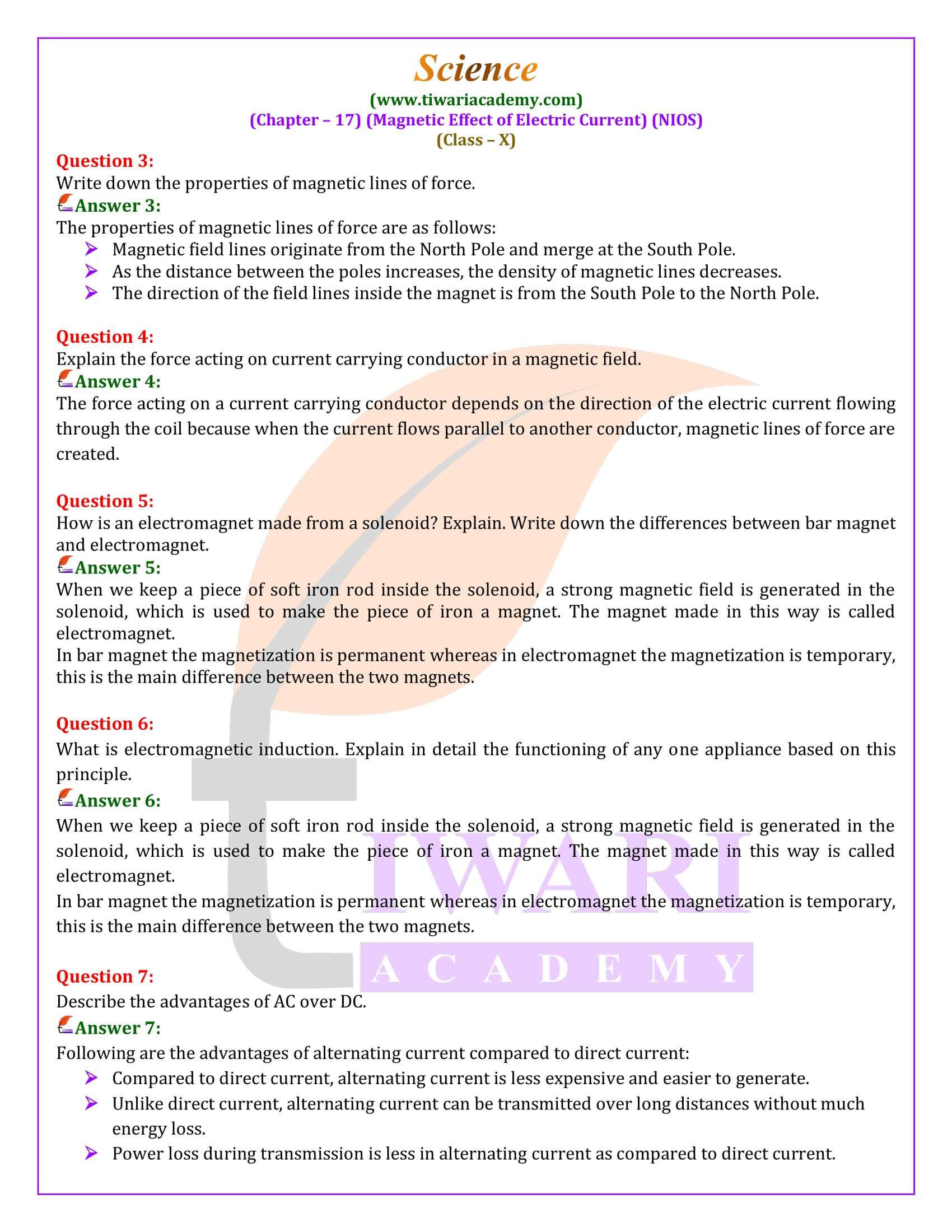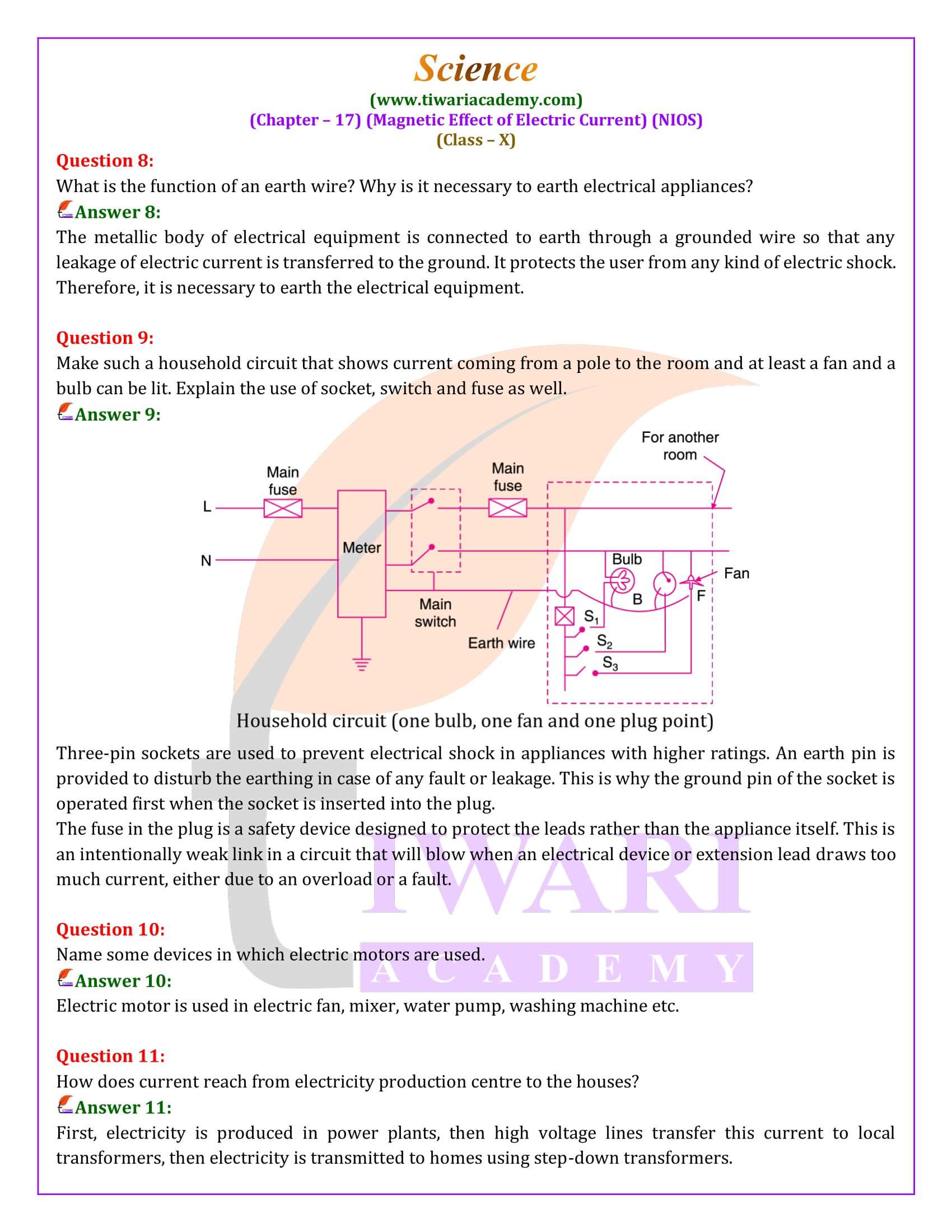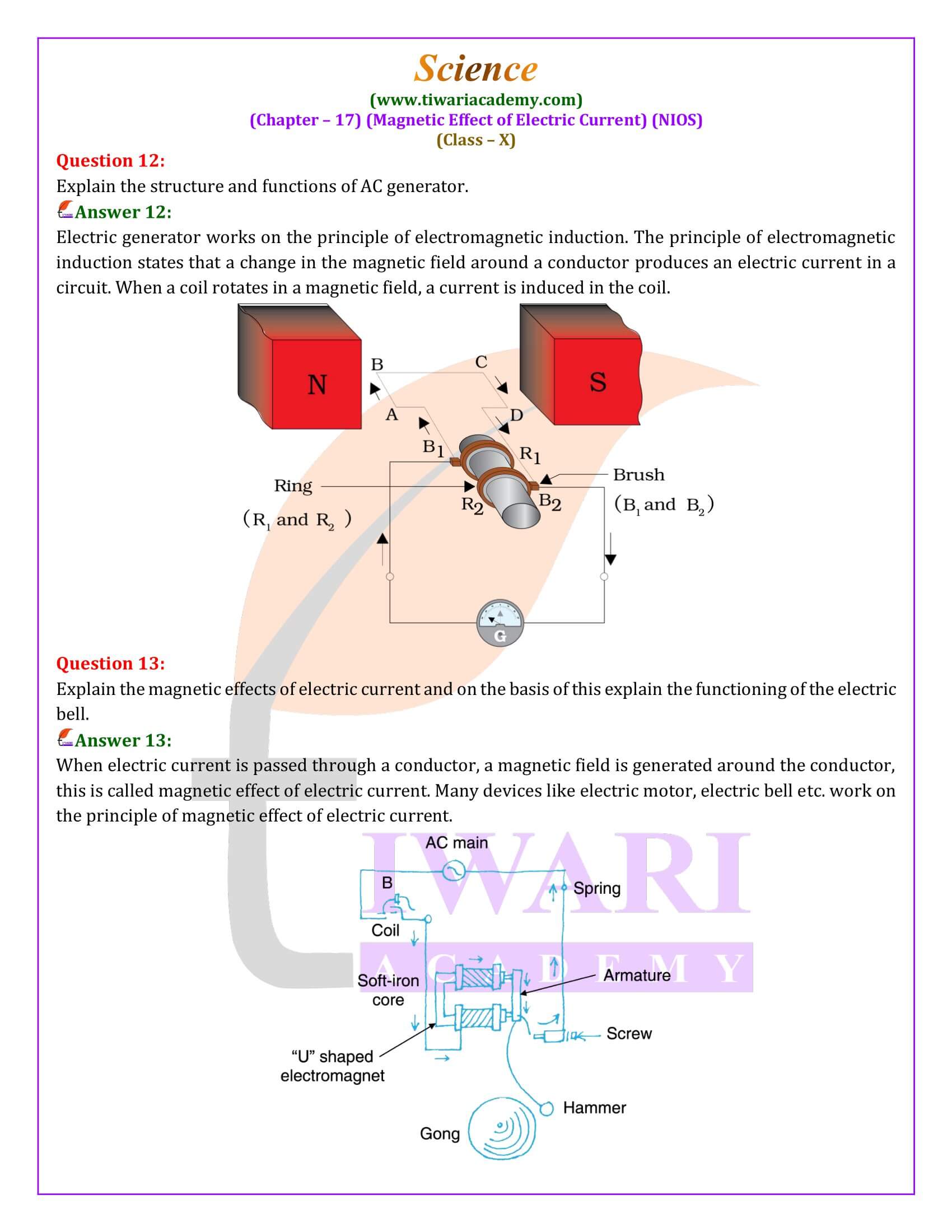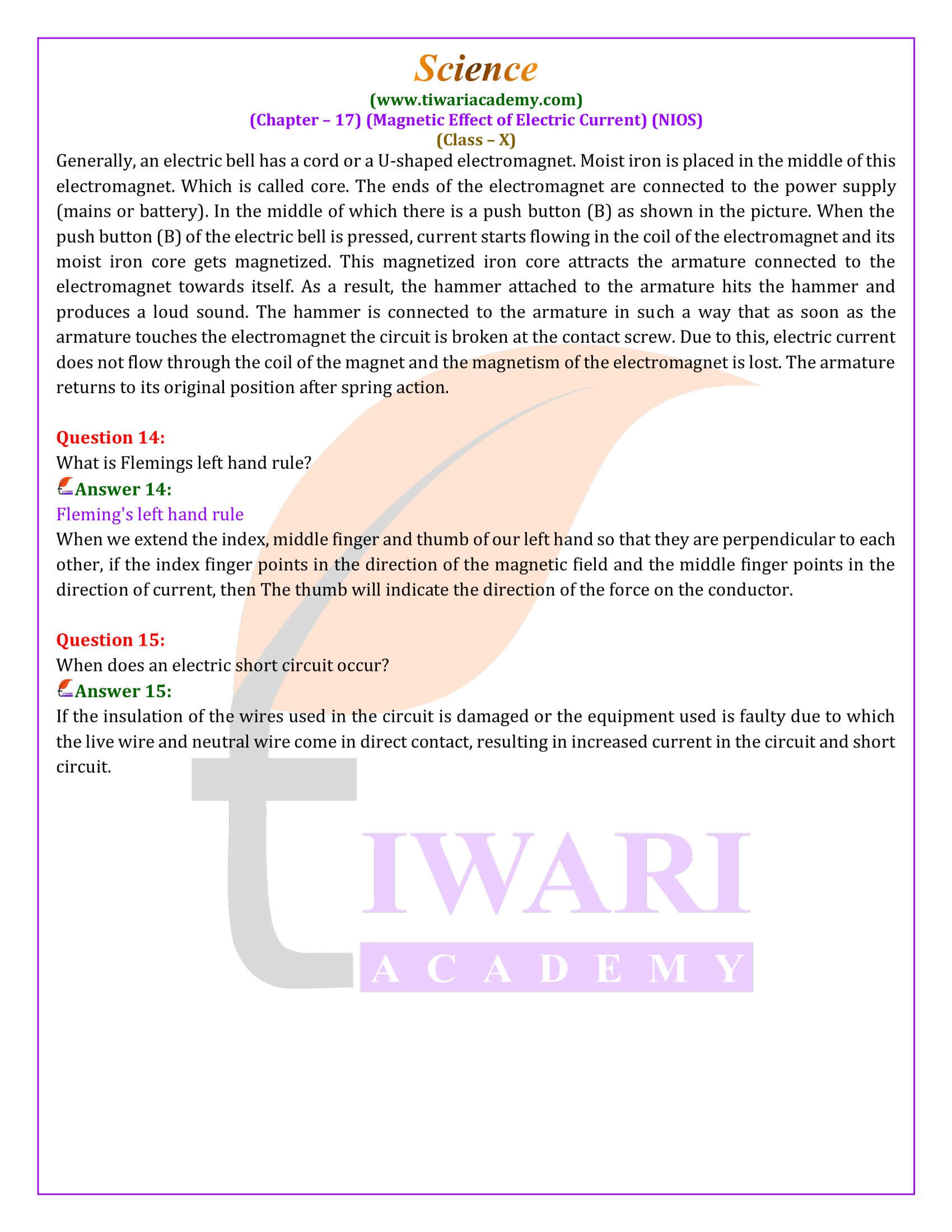NIOS Class 10 Science Chapter 17 Magnetic Effect of Electric Current in Hindi and English Medium revised and updated for new session. Get here NIOS Class 10 Science Chapter 17 Question Answers in simplified manner with full description.
NIOS Class 10 Science Chapter 17 Magnetic Effect of Electric Current
Magnetic Effect of Electric Current
NIOS Class 10 Science Chapter 17 Magnetic Effect of Electric Current provides a detailed exploration of how electricity and magnetism are intertwined, particularly focusing on the effects and applications of magnetic fields generated by electric currents. This description is well-suited for students and enthusiasts keen on understanding fundamental concepts in science and technology related to magnetism and electricity.
The Fundamentals of Magnetism and Electricity
The chapter 17 of 10th Science in NIOS, begins by emphasizing the indispensability of electricity in modern industrialization and everyday life, noting that everything from domestic appliances to industrial machinery relies on electric power. The generation of a magnetic field when an electric current passes through a conductor is explained as a foundational principle, illustrating the reciprocal relationship between electricity and magnetism. This section sets the stage for understanding more complex concepts discussed later in the chapter.
Key Concepts and Applications
Several key topics are addressed in a structured manner, starting with basic definitions and properties of magnets. Class 10 Science chapter 17 describes different types of magnets—such as bar, horseshoe, and cylindrical magnets—and their common applications in various devices like motors and generators. This elaborates on how natural magnets, like lodestones, led to the discovery of magnetism, and how artificial magnets are used today.
Electromagnetism is another significant focus, explaining how electric currents can induce magnetic fields and vice versa. This is essential for understanding devices that operate based on electromagnetic principles, such as electric bells and certain types of motors. NIOS Class 10 Science chapter 17 provides experiments and activities, like creating an electromagnet, to help readers visualize and practically grasp the concepts.
Detailed Exploration of Electromagnetic Phenomena
The phenomena of electromagnetic induction and the function of electric generators are explored thoroughly. The chapter 17, in 10th Science for NIOS, explains how movement within a magnetic field can generate electric currents, a principle utilized in all modern electric generators and motors. Practical applications, such as the construction and function of AC and DC generators, are discussed to provide a real-world context to the theoretical knowledge presented.
Safety Precautions and Practical Applications
Importantly, this chapter does not overlook the safety aspects of handling electrical devices. It discusses potential hazards like electric shocks, short circuits, and overloads, and offers guidance on preventive measures and safety practices. This includes the use of fuses, circuit breakers, and proper earthing techniques to safeguard against electrical accidents.
Educational Aids and Questions
Throughout the chapter 17 in NIOS Class 10 Science, diagrams, activities, and Intext questions are interspersed to aid comprehension and encourage interactive learning. These elements are designed to test the reader’s understanding and apply theoretical knowledge practically, making the educational content engaging and effective.
Class 10 Science Chapter 17, for NIOS Students, provides a comprehensive look at the magnetic effects of electric current, covering everything from basic principles and experiments to advanced applications and safety measures. It is a valuable resource for students and educators alike, offering a deep dive into the fascinating interplay between electricity and magnetism that underpins much of modern technology.
